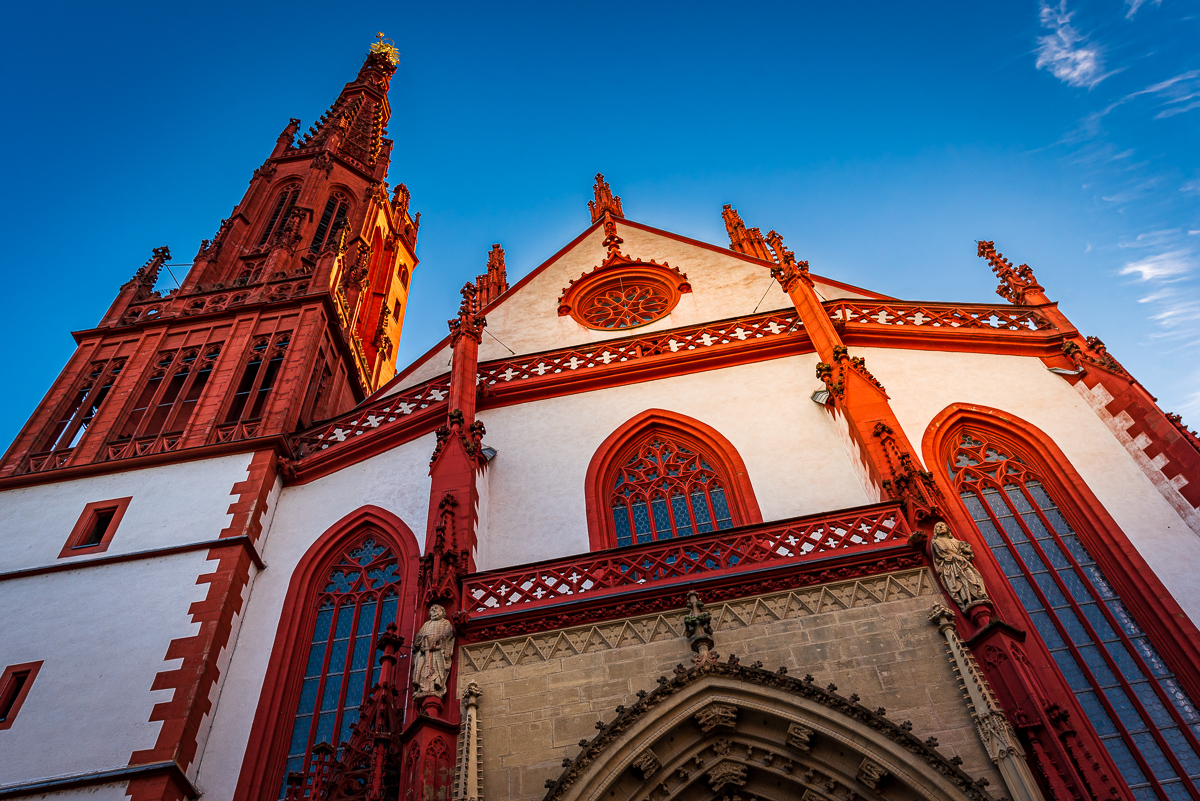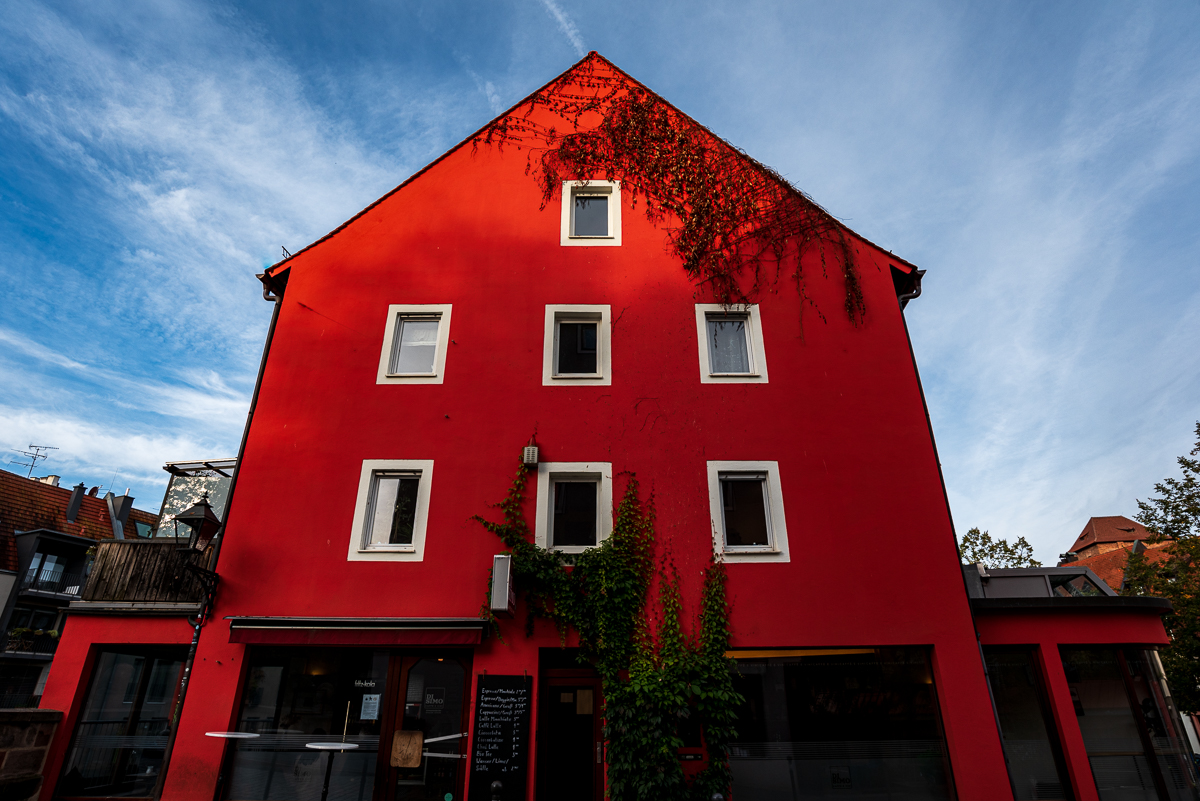Architecture Photography
Where perspective and style meet history and culture.
Architecture in Medieval Europe
Medieval cities, including those in Bavaria, Germany, were characterized by their unique aesthetics and the application of specific architectural and city-planning skills. During this era, architectural and urban design principles were driven by functionality and the need for defence rather than purely aesthetic considerations.
Medieval cities in Bavaria, Germany, were characterized by a combination of defensive architecture and utilitarian city planning. While aesthetics played a secondary role, they are evident in the intricate details of religious structures and the distinctive half-timbered houses. These cities were a product of their time, shaped by the need for protection and practicality in daily life.
The pictures on this page are from different towns and cities in Bavaria, Germany, such as Munich, Nuremberg, Fürth, and Würzburg.


Nuremberg in German Medieval History
Nuremberg holds significance in Germany’s medieval history for several reasons. Firstly, it was a major imperial city and played a crucial role in the Holy Roman Empire. The city’s strategic location made it a key centre for trade and commerce, contributing to its economic prosperity during the medieval period.
In the 14th century, Nuremberg became a Free Imperial City, gaining autonomy and independence from local rulers. This status allowed the city to develop its own legal and political systems, further solidifying its importance in the region.
Additionally, Nuremberg was a hub for cultural and artistic achievements. The city became renowned for its skilled artisans and craftsmen, particularly in the fields of metalwork, printing, and painting. The famous Nuremberg Chronicle, a 15th-century illustrated world history, is a testament to the city’s cultural contributions during this time.
Furthermore, Nuremberg hosted several imperial diets, or assemblies, where important decisions were made regarding the governance of the Holy Roman Empire. One of the most notable diets held in Nuremberg was the Golden Bull of 1356, which established the rules for electing the Holy Roman Emperor.
Finally, Albrecht Dürer, the renowned German painter, engraver, and mathematician of the Renaissance, had a significant and lasting relationship with Nuremberg. Born in Nuremberg in 1471, Dürer spent much of his life in the city and contributed greatly to its cultural and artistic legacy.
Nuremberg’s significance in Germany’s medieval history can be attributed to its role as a thriving economic centre, a Free Imperial City with political autonomy, a cultural and artistic hub, and a venue for important imperial assemblies that shaped the course of the Holy Roman Empire.










Würzburg
Würzburg, nestled along the banks of the Main River, is a city that echoes through the annals of German history, particularly within the intricate threads of the Holy Roman Empire. As one delves into the rich tapestry of Würzburg’s past, the city reveals itself as a pivotal player in shaping the destiny of this medieval empire.
In the historical theatre of the Holy Roman Empire, Würzburg emerged as a key bishopric. The city’s origins can be traced back to the 8th century when a Carolingian fortress stood proudly on the Marienberg hill, overlooking the Main. Through centuries, Würzburg evolved into a prominent ecclesiastical centre, with its bishops holding significant spiritual and political sway.
During the Middle Ages, Würzburg became a hub of intellectual and cultural exchange, fostering the development of arts and sciences. The local bishopric played a vital role in shaping religious doctrines and influencing the political landscape of the Holy Roman Empire. The iconic Würzburg Cathedral, with its Romanesque and Gothic elements, is a testament to the city’s enduring historical significance.
Moving forward in time, Würzburg faced the turbulence of the Thirty Years’ War. The city’s resilience and eventual reconstruction marked a chapter of renewal, contributing to the broader narrative of the Holy Roman Empire’s complex history. The Residenz, a masterpiece of Baroque architecture and a UNESCO World Heritage Site, symbolises the city’s endurance through tumultuous times.
What sets Würzburg apart, beyond its historical accolades, is the seamless blend of its rich heritage with a modern, vibrant energy. The Alte Mainbrücke, adorned with statues of saints, connects the historic and lively districts, offering a picturesque scene that encapsulates the essence of Würzburg. The Old Main Bridge serves as a physical link across the river. It metaphorically bridges the past and present, showcasing Würzburg’s ability to embrace its history while evolving into a dynamic city.
Würzburg’s narrative is intertwined with the intricate history of the Holy Roman Empire. From its humble beginnings as a fortress to its role as a bishopric, the city has weathered the storms of time. Today, Würzburg is a living testament to its historical significance and a modern city that seamlessly blends tradition with contemporary vitality.
Neuschwanstein and Hohenschwangau Castles
Neuschwanstein and Hohenschwangau Castles are iconic landmarks in the picturesque Bavarian Alps of Germany. Commissioned by Ludwig II of Bavaria, these castles are architectural marvels and carry a rich historical legacy.
Neuschwanstein Castle: Neuschwanstein Castle, often dubbed the “fairy-tale castle,” stands as a testament to the romantic ideals of Ludwig II. Construction of this masterpiece began in 1869 and was never fully completed during Ludwig’s lifetime. Inspired by Wagnerian opera and medieval legends, the castle’s design reflects Ludwig’s deep appreciation for art and culture.
The construction of Neuschwanstein was spearheaded by architect Eduard Riedel, and the castle was intended as a private retreat for Ludwig II. The castle’s interior is adorned with intricate murals depicting scenes from Wagner’s operas, showcasing Ludwig’s admiration for the composer. Despite its incomplete state, Neuschwanstein opened to the public shortly after Ludwig died in 1886 and has since become one of Germany’s most visited tourist attractions.
Hohenschwangau Castle: Situated nearby, Hohenschwangau Castle has a longer history, dating back to the 12th century. Originally constructed by the Knights of Schwangau, it was a fortress guarding the vital Alpine passes. Over the centuries, the castle underwent various renovations and changes in ownership.
In 1832, Crown Prince Maximilian (later Maximilian II of Bavaria), Ludwig II’s father, acquired Hohenschwangau. Ludwig spent much of his childhood here, and the castle’s picturesque surroundings left a lasting impression on him. This influence is evident in Ludwig’s later decision to build Neuschwanstein nearby.
Ludwig II of Bavaria: Ludwig II, often called the “Mad King” or the “Swan King,” ascended to the Bavarian throne in 1864. A fervent interest in the arts marked his reign, particularly the works of Richard Wagner. Ludwig’s eccentricities and withdrawal from political affairs raised concerns among his advisors, eventually leading to his deposition in 1886.
Ludwig’s architectural projects, including Neuschwanstein, were considered extravagant and contributed to the financial strain on the Bavarian monarchy. Despite his controversial legacy, Ludwig II’s impact on Bavarian culture is undeniable, and his castles continue to captivate visitors worldwide.
Interesting Trivia:
- Inspiration from Wagner: Ludwig II’s deep admiration for Richard Wagner extended beyond the construction of Neuschwanstein. He built a dedicated opera house, the Bayreuth Festival Theatre, to showcase Wagner’s works.
- Influence on Pop Culture: Neuschwanstein Castle inspired the iconic Disney castle seen in the studio’s logo. The fairytale aesthetics of Ludwig’s creation left a lasting imprint on popular culture.
- Mystery Surrounding Ludwig’s Death: Ludwig II’s death in Lake Starnberg remains mysterious. Official reports state that he drowned, but the circumstances surrounding his demise have fueled numerous theories and speculations.
Neuschwanstein and Hohenschwangau Castles are enduring symbols of Ludwig II’s vision and passion for the arts. Their enchanting presence in the Bavarian landscape continues to attract history enthusiasts, art lovers, and curious tourists alike.



The Bavarian Alps
Bavaria, Germany, is a popular tourist destination for its stunning scenery, charming villages, and rich culture. Nestled amidst the Bavarian Alps, Garmisch-Partenkirchen is an authentic Bavarian gem. They are also a photographer’s paradise, with majestic peaks, crystal-clear lakes, and lush valleys. And nestled amidst this breathtaking scenery lies Garmisch-Partenkirchen, a charming village that’s as picturesque as it gets.
Garmisch-Partenkirchen: A Bavarian Dreamland Captured in Landscapes
Garmisch and Partenkirchen were two separate villages that merged in 1935 to host the 1936 Winter Olympics. Today, Garmisch-Partenkirchen is a world-renowned ski resort offering some of Germany’s best skiing and snowboarding. But beyond its winter wonderland appeal, Garmisch-Partenkirchen is a haven for photographers year-round.


































